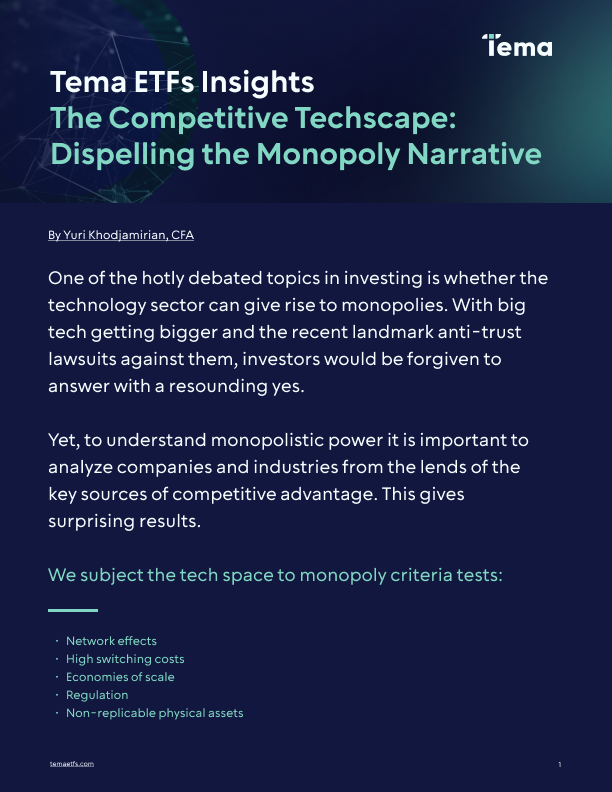Tema ETFs Insights
The Competitive Techscape:
Dispelling the Monopoly Narrative

Carefully consider the Fund’s investment objectives, risk factors, charges and expenses before investing. This and additional information can be found in the Fund’s prospectus or summary prospectus, which may be obtained by visiting www.temaetfs.com. Read the prospectus carefully before investing.
Important Risks
Diversification does not ensure profits or prevent losses.
Investing involves risk including possible loss of principal. There is no guarantee the adviser’s investment strategy will be successful.
Sector Focus Risk: The Fund may invest a significant portion of its assets in one or more sectors, including Engineering and construction, Financial Sector, FinTech, Industrials and Infrastructure, and thus will be more susceptible to the risks affecting those sectors than funds that have more diversified holdings across several sectors.
The success of the Fund’s investment strategy depends in part on the ability of the companies in which it invests to maintain proprietary technology used in their products and services. Companies in which the Fund invests will rely, in part, on patent, trade secret and trademark law to protect that technology, but competitors may misappropriate their intellectual property, and disputes as to ownership of intellectual property may arise. Similarly, if a company is found to infringe upon or misappropriate a third-party’s patent or other proprietary rights, that company could be required to pay damages to such third-party, alter its own products or processes, obtain a license from the third-party and/or cease activities utilizing such proprietary rights, including making or selling products utilizing such proprietary rights. These disputes and litigations may be detrimental to performance.
Investing in foreign and emerging markets involves risks relating to political, economic, or regulatory conditions not associated with investments in U.S. securities and instruments. In addition the fund is exposed to currency risk.
Tema Global Limited serves as the investment adviser to Tema Monopolies and Oligopolies ETF (the “Fund”), and NEOS Investments, LLC serves as a sub adviser to the Fund. The Fund is distributed by Foreside Fund Services LLC, which is not affiliated with Tema Global Limited nor NEOS Investments, LLC. Check the background of Foreside on FINRA’s BrokerCheck.
For inquiries: info@temaetfs.com